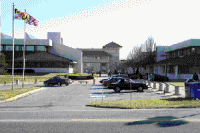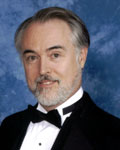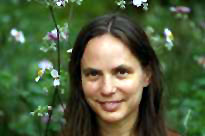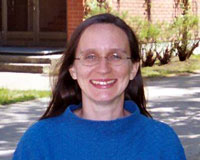
|
The Mathematical Association of America Maryland-District of Columbia-Virginia Section |
- Home
- History
- Main History Page
- Section History Document
- List of Past Officers
- Charter Members
- African-American Participation
- Stories from Section Members
- Section NExT Fellows
- Obituaries
- Smith Award Recipients
- Christensen Award Recipients
- Meritorious Service Award Recipients
- Undergraduate Award Winners
- Meeting Archive
- Past Meetings
- Talk Archive
- Old Section NExT Programs
- Newsletter Archive
- Meeting Minutes Archive
- Miscellaneous Documents
- Meetings
- Minutes
- Fall 2024 Executive
- Fall 2024 Membership
- Spring 2024 Executive
- Spring 2024 Membership
- Fall 2023 Executive
- Fall 2023 Membership
- Spring 2023 Executive
- Spring 2023 Membership
- Fall 2022 Executive
- Fall 2022 Membership
- Spring 2022 Executive
- Spring 2022 Membership
- Fall 2021 Executive
- Fall 2021 Membership
- Spring 2021 Executive
- Spring 2021 Membership
- Fall 2020 Executive
- Fall 2020 Membership
- Fall 2019 Executive
- Fall 2019 Membership
- Spring 2019 Executive
- Spring 2019 Membership
- Fall 2018 Executive
- Fall 2018 Membership
- Spring 2018 Executive
- Spring 2018 Membership
- Fall 2017 Executive
- Fall 2017 Membership
- Spring 2017 Executive
- Spring 2017 Membership
- Minutes Archive
- Newsletters
- Section NExT
- Awards
- Students
- Links
- Search
Fall 2005 Meeting at Montgomery College, Germantown Campus
On November 4-5, Montgomery College, Germantown Campus hosted the Fall 2005 MD-DC-VA Regional Meeting of the MAA.
Invited Addresses
Frank FarrisSanta Clara UniversityInvited Address: Equitability and the Gini Index Abstract: The rich are indeed getting richer, as measured by the Gini index, a number that economists use to express the degree to which a distribution of resources is equitable. If everyone had a perfectly equal share of the pie, the Gini index would be 0. One person having it all would lead to a Gini of 1. In the United States, the Gini index for family income has been rising steadily since the 1960s, from a low of about 0.34 to a current value of about 0.41. The Gini index for wealth has also been increasing and is now about 0.80. In this talk, I'll develop the Gini index and discuss the problem of computing it from data. The main mathematical tool is a simple one, the definite integral that gives the area between two curves, but more advanced topics, such as moments and order statistics, also appear. Biographical Sketch: Frank Farris serves as editor of Mathematics Magazine through 2005. He hopes to continue its tradition of inspiring and challenging teachers and students of mathematics at the undergraduate level. A native Californian, Frank did his undergraduate work at Pomona College and received his Ph.D. from M.I.T. in 1981. Awards include a Trevor Evans Award for his article "The Edge of the Universe" in Math Horizons and the David E. Logothetti Teaching Award at Santa Clara University, where he has taught since 1984. 
Brigitte ServatiusWorcester Polytechnic InstituteInvited Address: Combinatorics catalogs Geometry - Geometry generates Combinatorics Abstract: The study of complex geometric objects often begins by identifying the basic ingredients, such as points, lines, and planes, and determining the incidences among these objects. The resulting incidence structure is a combinatorial object that only partially captures the original. For example it may have more symmetries than the original geometric object. Under special circumstances it is possible to recover key properties of a geometric object from the combinatorial information alone. As an illustration of a general procedure, we use the characterization of self-dual graphs to classify self-dual polyhedra. Workshop: Bracing of square grids Abstract: Suppose that you are constructing a rectangular grid out of rigid beams of some fixed unit length. Such a simple grid can be easily deformed. By using beams of length equal to the square root of 2, we can brace the grid by placing a diagonal in each (or just some?) of its squares. The fundamental questions that we wish to explore and ultimately answer are:
Biographical Sketch: Brigitte Servatius is Professor of Mathematics at Worcester Polytechnic Institute. She received MS degrees in Mathematics and Physics from the University Of Graz, Austria and a PhD in Mathematics from Syracuse University in 1987. Since then she has been teaching at WPI. Her main research interests are matroids, especially rigidity matroids, as well as graph and combinatorial group theory. She enjoys coaching the Putnam Team, directing graduate and undergraduate research and using models puzzles and games in the classroom. She is editor of the Student Research Projects for the College Math Journal and editor of the Pi Mu Epsilon Journal. 
Catherine BénéteauSeton Hall UniversityInvited Address: The Isoperimetric Problem Abstract: The isoperimetric problem, posed by the Greeks, proposes to find among all simple closed curves the one that surrounds the largest area. The isoperimetric theorem then states that the curve is a circle. It is first mentioned in the writings of Pappus in the third century A.D. and is attributed there to Zenodorus. However, a rigorous proof was only achieved towards the end of the 19 th century! I will discuss the history of the problem and some of its geometric and analytic proofs. Finally, I will talk about some applications to the study of shapes of electrified droplets and small air bubbles in fluid flow. Biographical Sketch: Catherine Bénéteau has an undergraduate degree and a master’s degree in mathematics from McGill University in Canada, and a Ph.D. in mathematics from the University at Albany. She is a member of Project NExT, a professional development program for young mathematicians. She taught at the program for talented youth run by Johns Hopkins University and is currently an Associate Professor at Seton Hall University in South Orange, New Jersey. She has published papers in the areas of complex analysis, ergodic theory, and mathematics education. She has received grants for her own research, and for her work in curriculum development and undergraduate research. She recently had a daughter and finally found something that she loves at least as much as mathematics! |
Copyright © 2012 - The Mathematical Association of America
Please send comments, suggestions, or corrections for this page to Brian Heinold at heinold@msmary.edu
Last Modified: 03/05/2012 - 09:16pm